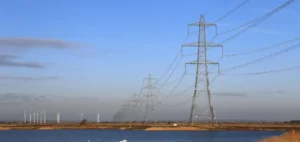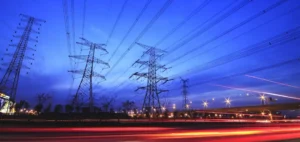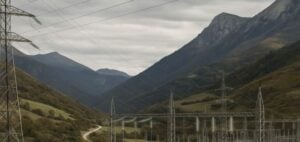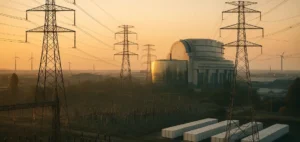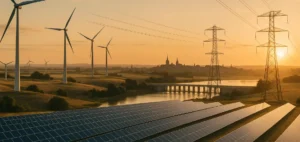At least 130 million people in Bangladesh were without power Tuesday afternoon after a grid failure caused a blackout, the power company said
government.
The grid went down at 2 p.m. (0800 GMT), and except for parts of northwestern Bangladesh, “the rest of the country is without electricity,” Shamim Ahsan, a spokesman for the Energy Development Board, told AFP.
Mr. Ahsan said that more than two out of three residents were without electricity.
According to the spokesperson, the cause of this network failure is not yet known. “The investigation is still ongoing,” he said, adding that a technical failure could be the cause.
According to a Facebook post by Zunaid Palak, Minister of Technology, electricity supply will be restored at 8 p.m. local time in Dhaka, the capital city of 22 million people.
Bangladesh has been suffering from a severe energy crisis for several months due to the rise in world fuel and gas prices following the Russian invasion of Ukraine.
As Dhaka struggles to finance the import of sufficient diesel and gas to meet the demand for electricity, it has had to introduce “austerity measures”.
The country’s diesel power plants, with a generating capacity of 1,500 megawatts, and some gas-fired plants were shut down.
The tens of thousands of mosques in the country have been ordered to run air conditioners only during the five daily prayers.
The shortages have been exacerbated by the depreciation of the local currency, the taka – by about 20 percent against the dollar, according to economists – and the decline in foreign exchange reserves.
The anger of the population has intensified following numerous and long power cuts.
At least three protesters were killed by the police during large rallies in Dhaka against the rising cost of living.
About 100 people were injured in a demonstration that was violently repressed by the police, according to the opposition Bangladesh Nationalist Party.
Consumer price inflation has also hit household budgets hard, and the government has recently pledged to cap the price of several staple foods, including rice, in order to ease public discontent.
Bangladesh had previously experienced a large-scale power outage in November 2014. About 70% of the country was then without electricity for almost ten hours.
Giant power outages, like the one in Bangladesh on Tuesday, have occurred repeatedly on every continent. Reminder of the main ones since 20 years:
– Asia –
In January 2022, millions of Kazakhs, Kyrgyz and Uzbeks are affected by a huge blackout.
The electricity networks of the Central Asian countries are interdependent and outdated, inherited from the Soviet era, and regularly suffer from breakdowns.
Pakistan, also accustomed to blackouts, experienced a massive blackout in January 2021, affecting all major cities.
In 2015, 80% of the country had already been plunged into darkness by a blackout caused, according to the government, by an attack by Baluch separatists on a high-voltage line.
In Indonesia, tens of millions of people on the island of Java are affected in August 2019 by a giant blackout due to failures at two power plants.
At the end of July 2012, India was hit by an unprecedented blackout that affected half of the country, after the almost simultaneous collapse of the networks serving some 20 states.
Bangladesh, meanwhile, had already experienced a large-scale power outage in November 2014. Approximately 70% of the country was without electricity for almost ten hours.
– Latin America –
On September 27, Hurricane Ian hit Cuba and plunged 11.2 million people into darkness.
In June 2019, Argentina and Uruguay experience a mega-breakdown due to an error by the distribution company Transener. It deprives 44 million Argentines and 3.4 million Uruguayans of electricity.
In March 2019, Venezuela is paralyzed by a huge blackout from the 7th to the 14th and again from the 25th to the 28th. It was followed by many other cuts that forced the government to implement a rationing plan.
Costa Rica is suffering the consequences of a damaged power line in neighboring Panama in early July 2017. The five million inhabitants of the country were completely without power for five hours. Nicaragua and El Salvador are also partly affected.
In Brazil, on November 10, 2009, a short circuit caused by a tropical storm plunged 50 million people into darkness.
– North America –
On August 14, 2003, a gigantic blackout affected 50 million people in the northeastern United States and Canada, plunging New York into darkness, following the failure of a generator of a private company.
The outage lasts 29 hours or even up to four days in some areas. It forces thousands of people to sleep under the stars on the sidewalks of New York. 54 car factories are forced to close. With the shutdown of the pumping stations, several cities are also without drinking water.
– Europe –
On November 4, 2006, a failure of the German network plunged a large part of Western Europe into darkness: 10 million people were affected, half of them in France, for nearly an hour.
The United Kingdom (2003), Italy (2003), Russia (2005), the Netherlands (2015), Turkey (2015) and France (2015) have also suffered outages in recent years, of longer duration, but affecting fewer people.
In Ukraine, on December 23, 2015, a cyber attack targeted a power grid for the first time in the world and caused a major blackout in the west for several hours.
– Africa –
In June 2022, Malawi, one of the poorest countries in the world, is plunged into darkness. This blackout affects the entire country but only a minority of the population, since less than 15% of the country’s more than 19 million inhabitants have access to electricity.


